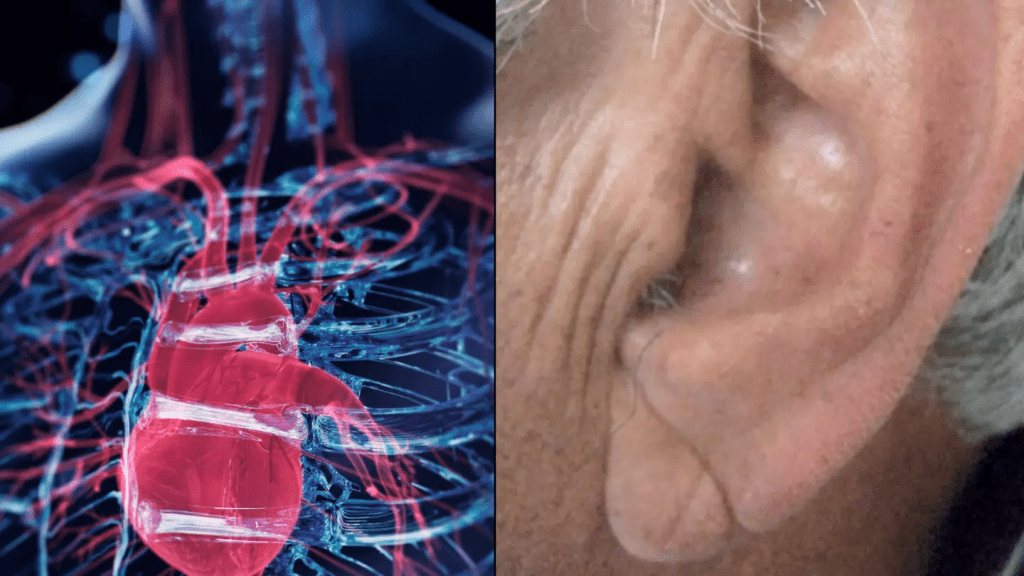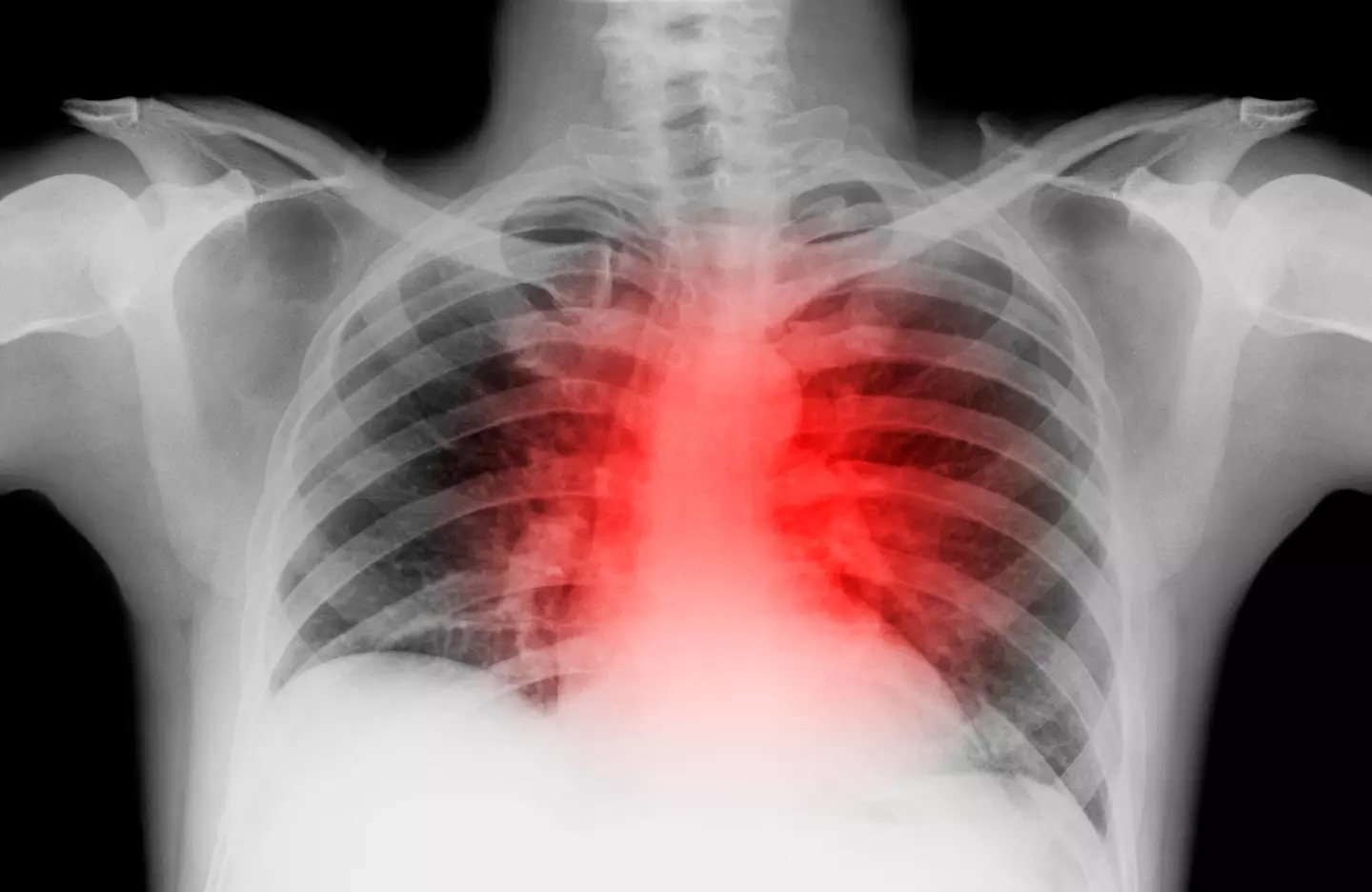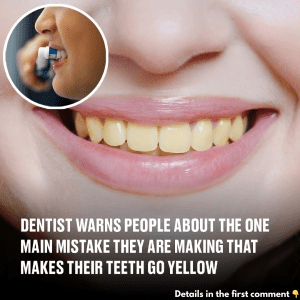Our bodies often give subtle hints when something’s wrong. We might notice pain, a strange lump, or a change in our overall wellness, prompting us to seek medical advice. But what if I told you that an unusual mark on your earlobe could be an indicator of potential heart issues? That’s right! A distinct mark on your earlobe, known as Frank’s sign, may signal underlying cardiovascular problems. Let’s explore this fascinating discovery and understand how it relates to heart health.
What is Frank’s Sign? The Distinct Earlobe Crease

Frank’s sign, named after Dr. Sanders T. Frank who discovered it in 1973, refers to a diagonal crease on the earlobe. This line, known scientifically as the “diagonal earlobe crease” (DELC), runs from the tragus towards the outer edge of the earlobe. While it might seem harmless, researchers have found a possible link between this crease and poor cardiovascular health.
The presence of DELC is believed to result from a loss of elastic fibers in the skin, which can occur as people age. However, many studies suggest a strong correlation between DELC and heart conditions such as coronary artery disease (CAD) and atrial fibrillation (AF), a condition that causes irregular heartbeats. So, why should we be paying attention to this unusual mark?
Is There a Link Between Earlobe Creases and Heart Disease?
While the exact relationship between DELC and heart disease remains unclear, research consistently shows a connection between the two. For instance, a 2022 study found that 78% of 50 patients who experienced fatal heart attacks had the diagonal earlobe crease. In a more recent 2024 study, researchers confirmed that DELC is “independently associated with a higher cardiovascular risk,” meaning that those with deeper and longer creases are at a significantly greater risk.
The deeper the crease, the greater the risk. This study emphasizes that the intensity of the crease could be a visible predictor of heart issues, further suggesting that monitoring DELC might help identify individuals at higher risk for heart disease.
A Predictor of Atrial Fibrillation: What You Should Know
Atrial fibrillation (AF) is a condition that disrupts the regular rhythm of the heart, increasing the likelihood of strokes and other complications. Interestingly, another study found that patients with both DELC and coronary artery disease were at a much higher risk of developing AF compared to those with CAD alone. The earlobe crease appeared to predict the likelihood of AF, making it a potentially valuable indicator for medical professionals.
According to findings published in the Journal of Clinical Medicine, DELC has been reported to predict major adverse cardiac events in individuals with known coronary artery disease. This revelation underscores the potential of earlobe creases as a tool for assessing heart risk, especially in high-risk patients.
Expert Opinions: Understanding the Bigger Picture
According to Professor Tim Chico, a leading cardiovascular medicine expert at the University of Sheffield, cardiovascular disease doesn’t just affect the heart—it impacts all blood vessels throughout the body, including those in the kidneys, brain, and other organs. Professor Chico emphasizes that while DELC could indicate a heightened risk, it doesn’t alter the standard preventive advice. The fundamentals remain unchanged: maintain a healthy weight, exercise regularly, avoid smoking, and eat a balanced diet.

Even with the presence of DELC, these lifestyle adjustments continue to be the best strategies for reducing cardiovascular risk. However, the crease’s visibility offers a potential early warning sign that shouldn’t be ignored.
How to Respond if You Have Frank’s Sign
If you discover a diagonal crease on your earlobe, don’t panic. DELC alone isn’t enough to diagnose a heart condition. However, it can serve as a reminder to take a closer look at your overall health. It’s wise to consult with a healthcare professional and consider a thorough cardiovascular examination. Regular check-ups, blood pressure monitoring, and cholesterol testing can help assess your heart’s condition and catch potential problems early.
The Bottom Line: Earlobe Crease and Heart Health
.jpg)
The body communicates in mysterious ways, and Frank’s sign is one of the more unexpected indicators of potential heart issues. While the diagonal earlobe crease isn’t a definitive sign of poor heart health, it’s a curious clue that could guide doctors in evaluating cardiovascular risk. If you have this crease, take it as a nudge to focus more on heart-healthy habits, such as regular exercise, a nutritious diet, and avoiding smoking. Remember, prevention is always better than treatment when it comes to cardiovascular health.
Conclusion: Keep an Eye on the Subtle Signs
Frank’s sign is more than just an unusual feature—it’s a potential indicator of cardiovascular health. Although further research is needed to fully understand the relationship between DELC and heart disease, current studies suggest that this earlobe crease could be a helpful visible clue. By staying vigilant and prioritizing heart-healthy lifestyle changes, you can take proactive steps towards better cardiovascular health.


